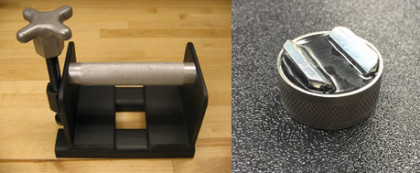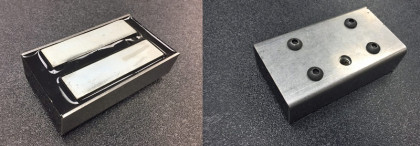Problem
Who out there hasn’t been faced with an application that requires parts to be joined or connected together? Sometimes, the connection requirement is only temporary and we’ll reach for clamps because they are quick and easy to use. In other instances when we need something more secure, we would think to use a mechanical fastener because screws are reliable and inexpensive. Welding is a good choice when the joint needs to be strong and more permanent. However, there are drawbacks to all of these options. Clamps can be cumbersome, and mechanical fasteners require advanced planning for drilling and location mounting holes. The strength and permanency of welding can also become its biggest downside because once something is welded in place, it cannot be easily changed or adapted.
Solution
The simple solution to the problems above may be to use magnetic assemblies, which are produced in a variety of shapes and sizes. Magnetic assemblies are created by incorporating permanent magnets into a conventional metal housing to increase the overall performance. A common type of magnetic assembly produced by Dura is called a magnetic base. Whether they’re called round magnetic bases, cup magnets, magnetic channels, or bi-polar magnetic assemblies, they can all provide a fantastic alternative to conventional fixture and fastening methods.
The clear advantage of being able to remove and relocate the magnetic base should be reason enough to consider it over welding, mechanically clamping, or mechanical fasteners. The two brief examples below describe the expanded range of opportunities offered by using magnetic bases.

Advantages
Case 1 – A customer of ours whose primary business is shipbuilding uses curtain containments within their processes. Most of the curtain containments are quite large and need to be temporarily welded into place. This was both inconvenient and very time consuming due to the limited space each location offered. After learning of their problem and discussing their needs we were able to adapt a standard design into a custom magnetic solution for them. Their new ability to quickly remove and relocate curtain containments gained by utilizing magnets instead of temporary welds has proved itself many times over as a valuable solution, saving them time and money.

Case 2 – Wind power generation is a popular and growing industry world-wide. The wind turbine towers require the use of electronics and other RF devices which help control the performance of the turbines and transmit valuable data. Our customer needed to maintain the ability to remove the enclosures that housed the sensitive electronics and controls, and we were able to develop a unique magnetic solution for them. As a result, a major selling point within their industry was that their enclosures were held in place with a strong and rugged magnet. This magnet didn’t require drilling into the tower or components and thereby damaging it. The addition of the magnet that could meet the rigors of the environment proved to be a tremendous feature within their product.

Conclusion
While magnetic bases cannot adequately replace fasteners, clamps, or welding in all applications, they can perform remarkably well in a variety of situations. From temporary work holding to more permanent use fixtures, there are a number of advantages and new options that can be created by using magnets. Imagine no longer needing to drill into work pieces, working with awkward clamps, or welding fixtures into place. Chances are we have a magnet on the shelf that will work; if not we can design and build it for you! Contact our team of magnetic engineers today and find out if your existing means of joining parts can be improved through the use of a magnet-based solution.

